Have you ever gazed at a neighbor’s porch, noticed their porch light color, and wondered if there was more to it than just a choice in aesthetics? Porch lights aren’t just there to fend off the darkness; they can also be silent communicators, sending messages without saying a word. In this article, we dive into the intriguing world of porch light color meanings, unlocking the hidden language of illumination right at your doorstep!
Table of Contents
Porch Light Color Meanings
The meanings of porch light colors vary depending on the culture. Americans usually use red, purple, blue, green, orange, or pink to show support and acknowledgement for different initiatives. Nevertheless, a lot of individuals continue to utilize traditional porch light colors, such warm white or pale yellow, to create a welcome entryway for visitors. Consider sometimes transitioning to colored illumination to support and advance the issues you care about in order to make a difference.
You may be aware that color and lighting have an effect on our feelings and moods. This explains why lighting systems are ideal for advancing important initiatives. They not only grab your attention, but they also have the power to evoke strong emotions. We advise getting inexpensive LED light bulbs as you might not utilize colorful light bulbs on your porch all year round. They are more energy-efficient and have a longer lifespan than incandescent lights.
Shedding Light on the Basics
Before we embark on our journey into the realm of porch light color meanings, let’s establish a baseline understanding. Porch lights come in a rainbow of colors, each with its unique charm and symbolism. Here are some basic porch light colors and their conventional meanings:
- White: White porch lights are the classic choice, symbolizing clarity, purity, and a welcoming atmosphere. It’s like your porch saying, “Come on in, the door’s always open!”
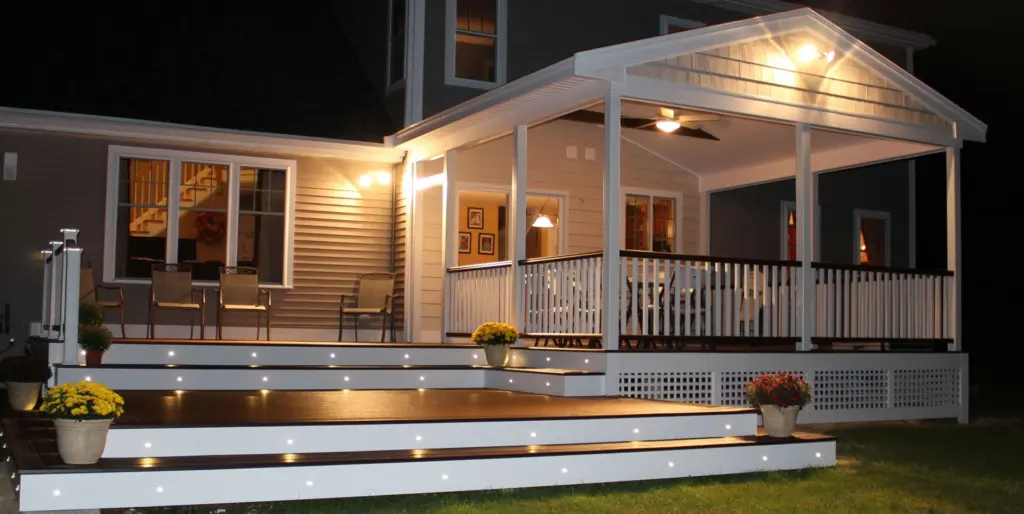
- Yellow: A warm yellow glow is often associated with friendliness and a sense of community. It’s like your porch extending a virtual handshake to everyone passing by.

- Blue: A blue porch light can signal different causes, from raising awareness about autism to expressing respect for the police force, and represent tranquility and a calm environment. It’s an unspoken invitation to relax and enjoy the serene atmosphere.

- Green: Green porch lights can signify safety and community support. In some areas, a green light might indicate a safe space for those seeking refuge.
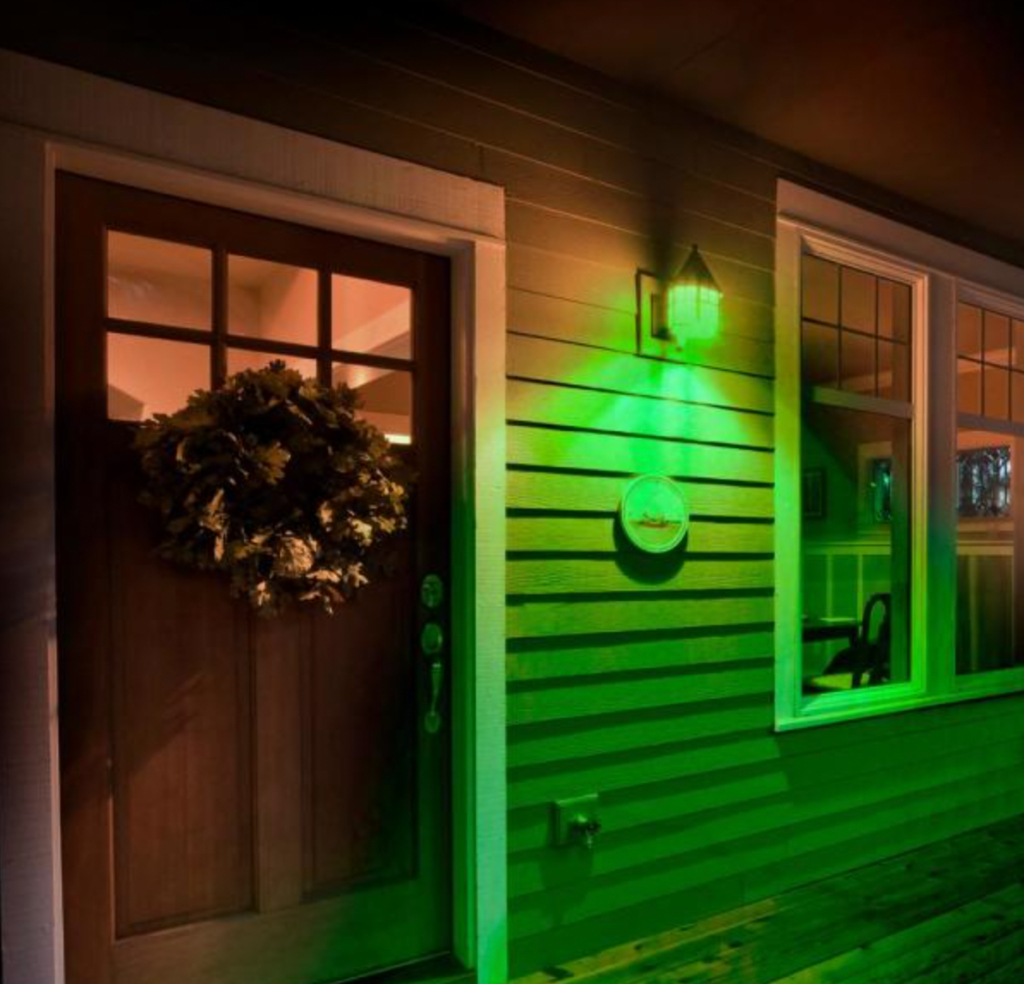
- Red: Bold and vibrant, red porch lights can convey passion, energy, and a lively spirit. It’s as if your porch is throwing a virtual party every night! In February, a sea of red porch lights illuminates neighborhoods, not in celebration of Valentine’s Day decoration, but to champion heart health awareness during American Heart Month.
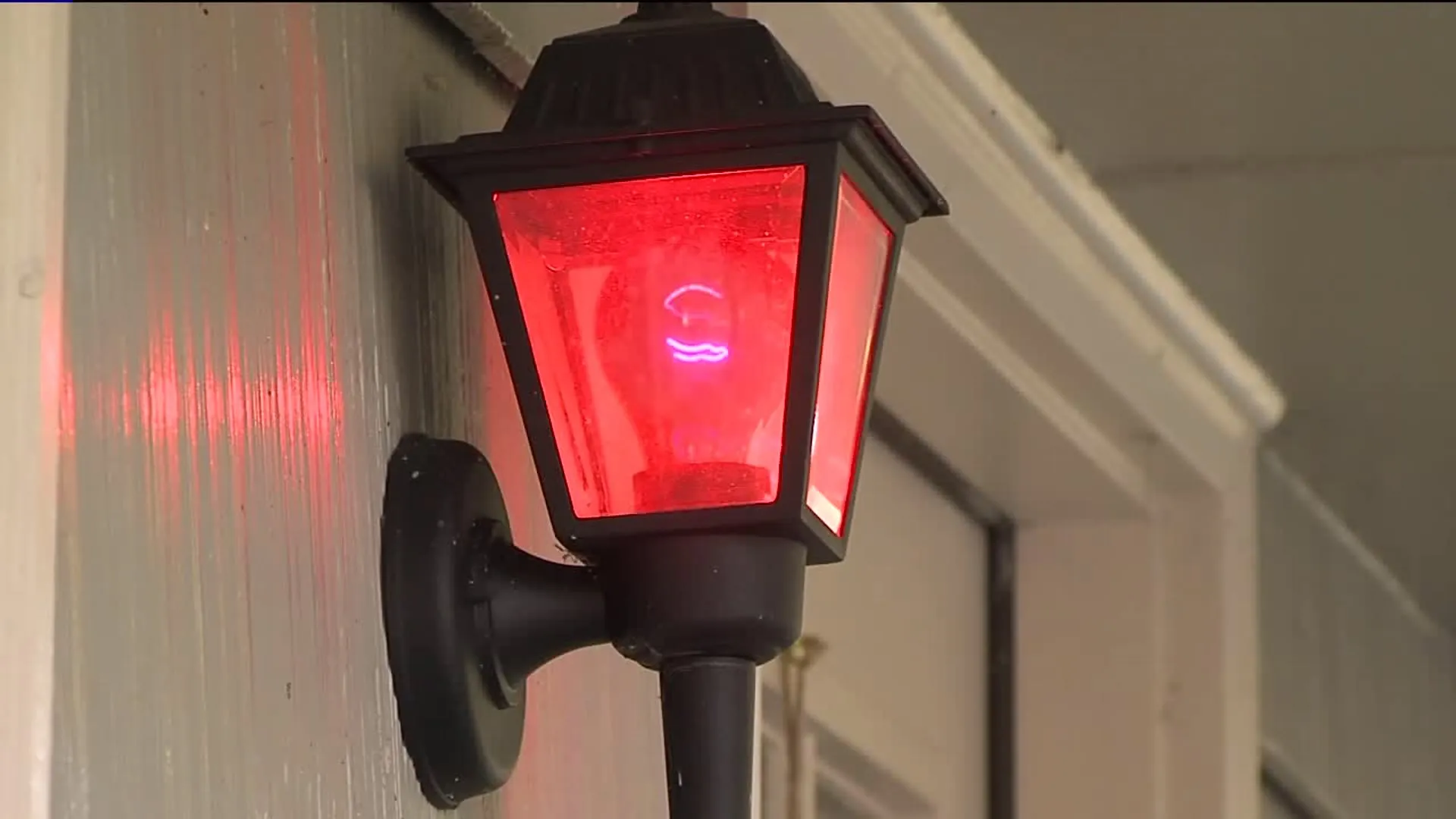
Now that we’ve got the basics down, let’s delve deeper into the fascinating world of porch light color meanings!
Unveiling the Hidden Messages
Purple: A Royal Welcome: purple porch light meaning
Ever noticed a porch bathed in a regal purple glow? It’s not just a color choice; it’s a statement! A purple porch light often signifies a sense of luxury, sophistication, and a touch of mystery. It’s like the porch is saying, “Welcome to my castle!”
And in In 2007, The Covington Domestic Violence Task Force initiated the “Purple Light Nights” campaign, a poignant endeavor to combat domestic abuse. Changing porch lights to purple during October, designated as Domestic Violence Awareness Month, signifies solidarity with survivors, remembrance of those lost, and hope for those trapped in abusive relationships. To amplify this meaningful gesture, consider embracing low-cost LED bulbs for longevity and energy efficiency.
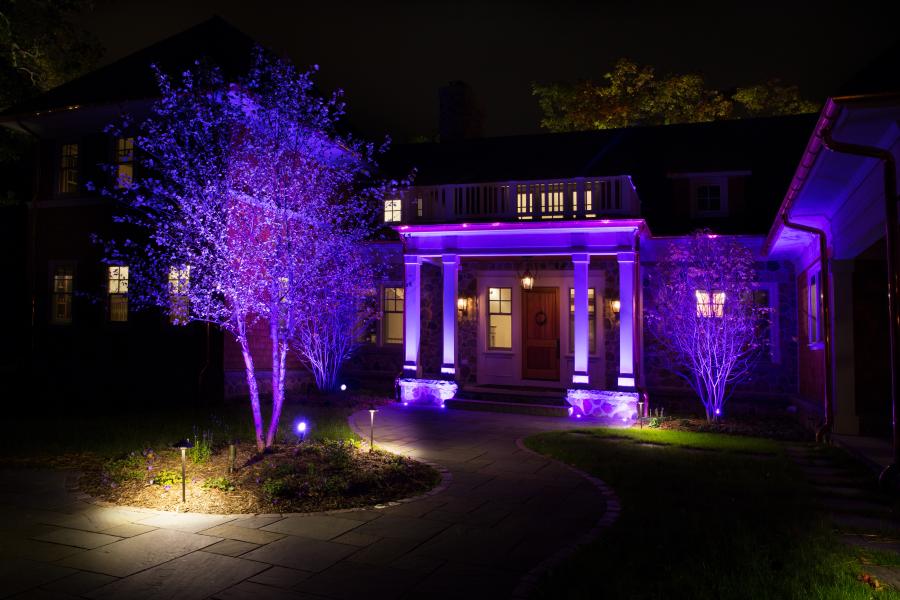
Pink: The Color of Compassion: pink porch light meaning
If your neighbor’s porch radiates a gentle pink hue, chances are they are advocates of kindness and compassion. Pink porch lights are sometimes used to raise awareness for breast cancer or simply to spread love and positivity. It’s like a subtle hug every time you walk by!

Amber: Keeping it Mellow
Amber porch lights exude a mellow and laid-back vibe. If you spot an amber glow, your neighbor might be saying, “Take it easy, enjoy life!” It’s the porch equivalent of a chill-out zone.

Teal: Supporting the Cause
Teal porch lights often have a deeper meaning. They are frequently used to show support for specific causes, such as raising awareness for PTSD or supporting survivors of sexual assault. It’s a powerful way for individuals to let their porch speak out on important issues.
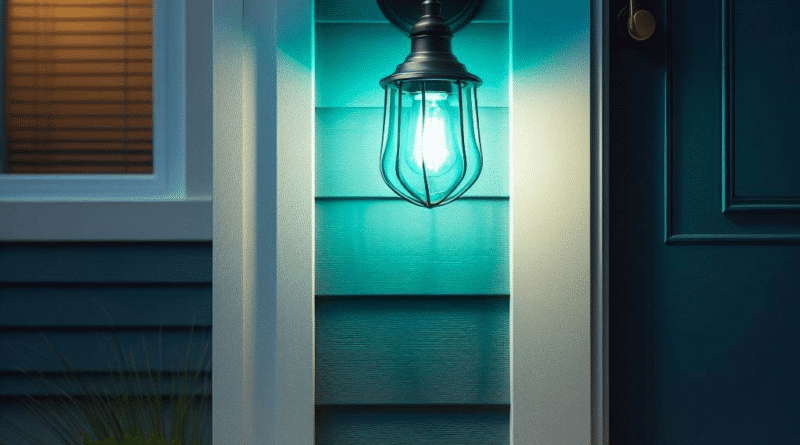
Orange Porch Light
Originating in Delphi, Indiana, the orange porch light serves as a poignant symbol of support and justice.
Following the tragic murder of Liberty German and Abigail Williams in 2017, the local community lit their porches with orange light bulbs to show solidarity. This community initiative spread nationwide, bringing attention to the tragedy. Orange porch lights also find resonance with Halloween festivities decor and the fall season decor, adding a warm and vibrant touch to the surroundings (Clever Patio).

Multicolored Extravaganza
Some porch enthusiasts take things to the next level with multicolored lights. This vibrant display might not follow a specific porch light color meaning but showcases a celebration of diversity and a love for all things colorful!

As we wrap up our exploration into porch light color meanings, it’s clear that these small beacons of light carry more significance than meets the eye. Whether you opt for a calming blue, a passionate red, or a compassionate pink, your porch light can be a silent communicator, sending messages of welcome, support, and warmth.
Next time you stroll through your neighborhood, take a moment to appreciate the porch lights around you. They might just be telling a story, sharing a cause, or inviting you to be part of a community. After all, in the language of porch lights, every color speaks volumes! So, what color is your porch light, and what message is it sending to the world?
FAQs
What do different color porch lights mean?
Porch lights of different colors can convey various meanings, and their significance may vary. Here are some common interpretations:
- White Lights: White lights are classic and often symbolize a clean and traditional look.
- Yellow Lights: Yellow lights are warm and inviting, providing a cozy atmosphere.
- Blue Lights: Blue porch lights may represent support for law enforcement or awareness for various causes.
- Red Lights: Red lights can symbolize different things, from holiday decorations to supporting charitable causes.
- Green Lights: Green lights may signify environmental awareness or support for military veterans.
- Purple Lights: Purple lights are sometimes used to raise awareness for domestic violence or Alzheimer’s disease.
- Pink Lights: Pink porch lights are commonly associated with breast cancer awareness.
Can I Change My Porch Light Color?
Absolutely! Changing your porch light color is as easy as swapping out the bulb or adding a colorful filter. Just ensure that your choice aligns with the message you want to convey.
What color light is best for a porch?
Warm White or yellow landscape lights, due to the cozy and welcoming ambiance that warm white landscape lights produce, they are utilized for ambient and accent lighting.Put up soft white lights for your gardens, patios, and decks.
What do blue lights on a porch mean?
Blue porch lights are often associated with supporting law enforcement, honoring police officers, or raising awareness about other law enforcement-related causes.
Do Porch Light Color Meanings Have Historical Roots?
Many porch light color meanings do have historical significance. For example, the use of blue lights to honor frontline workers gained popularity during the COVID-19 pandemic.
What does a pink porch light mean?
A pink porch light is commonly used to show support for breast cancer awareness. It symbolizes solidarity with those affected by breast cancer and promotes awareness of the disease.
What does a purple light on a porch mean?
A purple porch light may be used to raise awareness for different causes, such as domestic violence awareness, Alzheimer’s disease, or epilepsy awareness.




